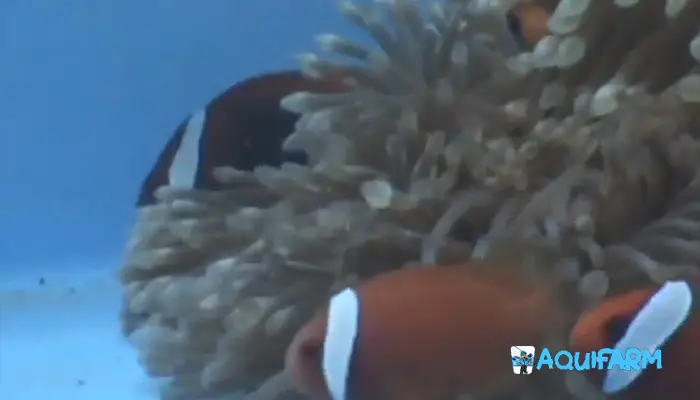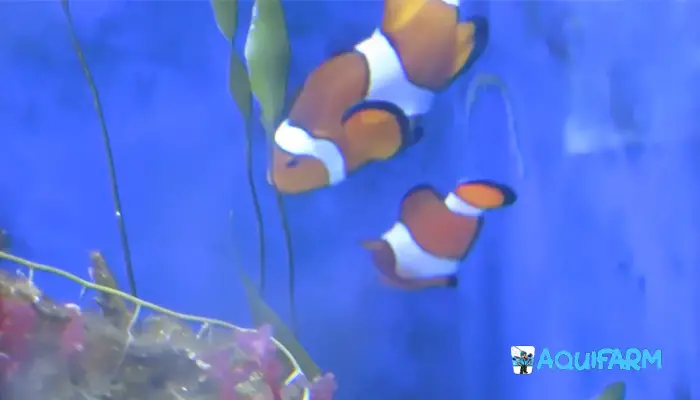5 Reasons Why My Clown fish Stay In the Corner
Clownfish are gorgeous, hardy, and great choices for reef tanks—but sometimes they behave in ways that worry new keepers. One common question is: why is my clownfish staying in the corner?
Short answer: Clownfish often hang in one spot to guard territory or eggs. But persistent corner-hugging can also signal stress—from bullying, poor water parameters, strong flow, or illness. A frightened clownfish may go off food and decline, so it’s worth troubleshooting early.
Top 5 reasons a clownfish hides in the corner:
- Territorial pressure (conflicts with tank mates)
- Insecurity (submissive/weak fish avoiding aggression)
- Mating/egg guarding (site fidelity)
- Incorrect water parameters or flow
- Injury or disease
Below, we’ll cover how to tell which cause applies to your fish, plus simple fixes so you can get your clown back to normal behavior.
Reasons a Clownfish Stays in the Corner
Clownfish are generally easy to keep, but they’re also site-attached and can be surprisingly assertive about “their” area. If yours is glued to one corner, start here:
1) Territorial Clash
Clownfish naturally claim a small patch of reef and defend it. In aquariums, they pick a spot (often a back corner, powerhead, or rock) and stick to it. They may chase away intruders—especially other males or similarly shaped fish in the same niche. Females tend to roam more, while males “hold the fort.”
If stocking is tight or the scape funnels everyone through one lane, expect skirmishes. Provide multiple “zones” in the rockwork so each fish can settle without constant face-offs.
2) Insecurity (Submissive Behavior)

In clownfish social structure, one becomes dominant female, one male, the rest stay juvenile/submissive. Subordinate fish—or individuals bullied by larger tank mates—often retreat to a safe corner to avoid conflict. If your tank lacks hiding places or a suitable host (anemone or surrogate coral/rock), a timid clown may stay pinned to the glass to feel safe.
Fixes: increase line-of-sight breaks, add caves/branches, and avoid mixing with overly boisterous species. A matched clown pair helps reduce constant dominance battles among multiple singles.
3) Mating & Egg Guarding

Paired clowns often choose a flat rock or nook as a nest. The male will tend/guard the eggs and hover in that area for days, fanning and cleaning the clutch. During this period, staying in a corner is normal and protective, not a problem.
4) Incorrect Water Parameters or Flow
Clownfish prefer moderate flow. If the current is blasting, they’ll hug a calm corner to avoid the stream. Poor water quality (ammonia/nitrite), temperature swings, or low dissolved oxygen also trigger corner-sitting and surface gulping.
Quick tell: if your clown is lingering at the top, oxygen may be low. Increase surface agitation and check parameters immediately.
5) Illness or Injury
Sick or wounded fish isolate to conserve energy and avoid harassment. Look for clamped fins, rapid breathing, stringy poop, spots/lesions, frayed fins, or loss of appetite. Reduce stress, keep lighting calm, and consider a quarantine if you suspect parasites or infection.
Ideal Water Parameters for Clownfish
Test weekly (and anytime behavior looks off): temperature, pH/alk, ammonia, nitrite, nitrate, and salinity. Target ranges:
- Temperature: 75–82°F (24–28°C), avoid rapid swings.
- pH: 8.1–8.4 (stable within this range).
- Salinity (SG): 1.020–1.025; keep consistent.
- Ammonia/Nitrite: 0 ppm (toxic even at low levels).
- Nitrate: < 20 ppm (lower is better for long-term health).
Do regular partial water changes and run appropriate mechanical/biological filtration. If fish crowd the surface or respiration is fast, increase aeration and check for ammonia.
Great Tank Mates for Clownfish
Choose peaceful species with similar needs and avoid fin-nippers or heavy bullies. Solid options include:
- Tangs (appropriately sized tanks)
- Wrasses (reef-safe, smaller species)
- Dartfish
- Blennies
- Dwarf Angelfish (with caution)
- Puffers (reef-safe species, watch compatibility)
- Gobies
- Domino Damselfish (semi-aggressive; tank size matters)
- Green Chromis
- Banggai Cardinalfish
You can also add a host anemone (for experienced reef keepers) or offer safe surrogates like large leather corals, euphyllia, or rock structures. More structure = more confidence = less corner hiding.
Husbandry Tips to Keep Clownfish Confident
Stock smart: In modest tanks, keep a single pair rather than multiple singles. In very large systems, introduce groups at the same time to reduce bullying of newcomers.
Give them structure: Build distinct territories with rock arches, caves, and branching zones. Provide low-flow resting spots away from powerheads.
Match species & needs: Pick tank mates with compatible temperament and water requirements. Keep parameters stable; clowns dislike big swings more than exact numbers.
If a clownfish still parks in a corner after fixes, observe quietly for a few days. Persistent distress, not eating, or visible lesions = time to consult an experienced aquarist or reef-savvy vet.
FAQs
How do I know if my clownfish is stressed?
Common stress signs include hiding in one corner, rapid breathing, clamped fins, refusing food, or darting/flashing against rocks. Check water parameters first, reduce flow near its spot, and watch for aggression from tank mates.
Does a clownfish need an anemone?
In aquariums, a host anemone is optional. Many clownfish will host in soft corals, euphyllia, or even powerheads and corners. Anemones need mature, stable systems and strong lighting—attempt only if you can meet their requirements.
What do clownfish look like when sleeping?
They often sleep near the bottom, within rockwork, or nestled into a host (anemone or surrogate coral). Still fins and gentle hovering are normal; erratic breathing or lying on the side can indicate stress or illness.
Conclusion
If your clownfish stays in the corner, start by ruling out stress: check water quality and flow, add hiding structure, and assess tank-mate dynamics. For breeding pairs, corner-guarding a nest is perfectly normal. With a few tweaks, most clowns resume patrolling their small “home range” and eating well.
Have a question about your setup or stocking list? Drop it in the comments—I’ll help you troubleshoot.
- Honey Gourami Clamped Fins – Expert Guide To Diagnosis, Treatment, And - December 14, 2025
- Gourami Upside Down – Decoding Behavior & Ensuring A Thriving, Healthy - December 14, 2025
- Gourami Swimming Vertically – Deciphering Behavior & Ensuring Health - December 14, 2025
